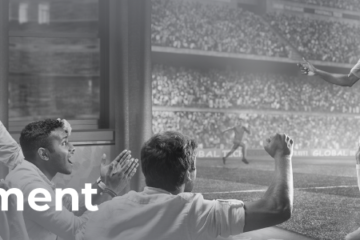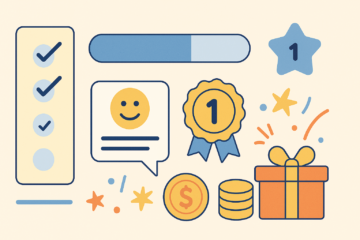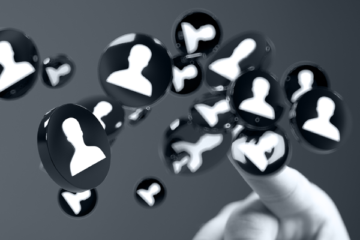Whether its work, recreation or straight old-fashioned fun, games have always been one of the greatest ways to capture attention and engage participants. Across industries, gamification has proven to be a versatile tool that can enhance engagement, motivation, and productivity. By incorporating game-like elements into everyday tasks and interactions, businesses and organizations can enhance experiences and foster long-term loyalty and participation with the motivation offered by games. As technology continues to evolve, the potential applications of gamification will only expand, creating new opportunities for innovation and impact in virtually every sector.
Here are some of the industries that benefit from the application of game-design elements and principles in non-game contexts:
1. Education
- Personalized Learning
- Interactive learning experiences
- Adult Learning and MOOCs
- Collaboration and Social Learning
Examples
- Tools like Duolingo and Kahoot! use game mechanics to make learning fun, improve retention, and foster a love for learning.
- Platforms like Coursera and Udacity integrate gamified elements such as badges, leaderboards, and interactive quizzes to keep learners motivated and track their progress.
2. Corporate Sector
- Employee Training and Development
- Onboarding and Continuous Training
- Motivation and Productivity
- Skill Assessment
- Employee Engagement and Retention
Examples
- Salesforce’s Trailhead provides employees with interactive learning paths and rewards.
- Gamification platforms like Bunchball or Badgeville implement point systems, leaderboards, and badges to boost employee motivation and productivity, making routine tasks more engaging.
3. Health and Wellness
- Physical Health & Fitness Apps
- Mental Health, Mindfulness and Therapy Apps
- Healthcare Programs, hospitals and health insurance companies for to encourage patients to follow treatment plans, attend regular check-ups, and maintain healthy habits.
Examples
- Applications like Strava, Fitbit, and MyFitnessPal use gamification to encourage users to stay active and maintain a healthy lifestyle by tracking their progress and offering rewards for meeting fitness goals.
- Apps like Headspace and SuperBetter incorporate gamification to make mindfulness and therapeutic exercises more engaging, helping users manage stress and improve mental well-being.
4. Marketing and Customer Engagement
- Loyalty Programs
- Interactive Marketing Campaigns
- Customer Retention
Examples
- Brands like Starbucks and Nike use gamified loyalty programs to reward customers for repeat purchases, fostering brand loyalty through points, rewards, and personalized offers.
- McDonald’s Monopoly game and Nike’s fitness challenges.
5. Retail and E-Commerce
- Customer Experience
- Gamified Shopping Experiences
- Employee Training
- Sales Training
Examples
- Retailers like Amazon and eBay use gamified elements such as time-limited deals, points for purchases, and interactive product recommendations to enhance the shopping experience.
- Retail companies use gamified training programs to educate employees about new products, sales techniques, and customer service skills.
6. Finance
- Financial Literacy and Management
- Saving and Investing Apps
- Budgeting Tools
Examples
- Apps like Acorns, Chime, and Robinhood use gamification to educate users about saving and investing, offering rewards for achieving financial milestones and providing interactive tutorials.
- Financial management apps use gamified elements to help users track their spending, save money, and set financial goals.
7. Fitness and Sports
- Sports Training
- Athlete Performance
- Fan Engagement
- Sports Leagues and Teams
Examples
- Gamification helps athletes improve performance through data-driven feedback and interactive training programs. Apps and wearables track progress, set challenges, and offer rewards for reaching milestones.
- Professional sports leagues use gamified apps to engage fans, offering points for attending games, participating in fantasy leagues, and interacting on social media.
8. Travel and Hospitality
- Customer Loyalty
- Rewards Programs
- Travel Planning
- Interactive Itineraries
Examples
- Airlines and hotel chains like Marriott and Delta use gamified loyalty programs to reward frequent travellers with points, upgrades, and exclusive benefits.
- Travel apps incorporate gamification to help users plan trips, offering rewards for visiting recommended destinations and participating in local activities.
9.Government and Non-Profits
- Civic Engagement
- Community Involvement
- Educational Campaigns
Examples
- Governments use gamification to encourage citizens to participate in community activities, report issues, and engage in local governance through apps and online platforms.
- Non-profits use gamified campaigns to raise awareness about social issues, encouraging participation through challenges, quizzes, and interactive content.
Environmental Sustainability
- Eco-Friendly Behavior
- Sustainability Programs
- Corporate Responsibility
- Green Initiatives
Examples:
- Companies use gamification to promote sustainability among employees and customers, offering incentives for participating in green initiatives and reducing their carbon footprint.
Clearly, Gamification has revolutionized the world, from how businesses engage with customers, how educators teach students, to how employees remain motivated in the workplace. As we look to the future, the potential of gamification continues to expand, promising innovative solutions and transformative impacts across different sectors. This blog further explores predictions and insights into the future of gamification, examining emerging trends, technological advancements, and the broader implications for society.
The future of Gamification
- Artificial Intelligence and Machine Learning
The integration of artificial intelligence (AI) and machine learning (ML) with gamification will be a game-changer. AI can personalize gamified experiences by analyzing user data to tailor challenges, rewards, and feedback. This personalization can enhance engagement and effectiveness, particularly in education and employee training. For instance, AI-driven gamification can adapt learning paths in real-time, offering customized content that matches the learner’s pace and style.
2. Virtual and Augmented Reality
Virtual reality (VR) and augmented reality (AR) are set to take gamification to new heights by creating immersive experiences. In education, VR can transform traditional learning environments, making history lessons come alive or simulating complex scientific processes. In the corporate world, AR can gamify mundane tasks, such as assembly line work, by overlaying game-like elements onto real-world activities, thus enhancing productivity and job satisfaction.
Case Studies and Real-World Examples
To further illustrate the potential of gamification, let’s explore 2 case studies that serve as great real-world examples that highlight its impact across various sectors.
- Duolingo: Revolutionizing Language Learning
Duolingo is a popular language-learning platform that has successfully leveraged gamification to engage millions of users worldwide. The app uses game-like elements such as points, levels, streaks, and leader boards to motivate learners and keep them coming back. By breaking down language learning into bite-sized lessons and providing immediate feedback, Duolingo makes the process enjoyable and accessible.
The success of Duolingo demonstrates how gamification can transform education by making learning fun and engaging. Its personalized approach, powered by AI, ensures that each learner receives content tailored to their proficiency level and learning pace, maximizing effectiveness and retention.
2. Starbucks: Enhancing Customer Loyalty
Starbucks has effectively used gamification in its loyalty program, Starbucks Rewards, to drive customer engagement and retention. The program uses a tiered system where customers earn stars for each purchase, which can be redeemed for free items. The app also includes challenges, personalized offers, and bonus star opportunities to keep customers engaged.
By gamifying the loyalty program, Starbucks not only incentivizes repeat business but also creates a sense of excitement and reward for customers. The personalized offers, based on customers’ purchasing behavior, enhance the overall experience and foster a stronger emotional connection with the brand.
With the information in this blog, you are now equipped with all the basic information about the scope of Gamification you need to begin exploring its possibilities in your domain. Gamify your business growth efforts to motivate, inspire and engage.


